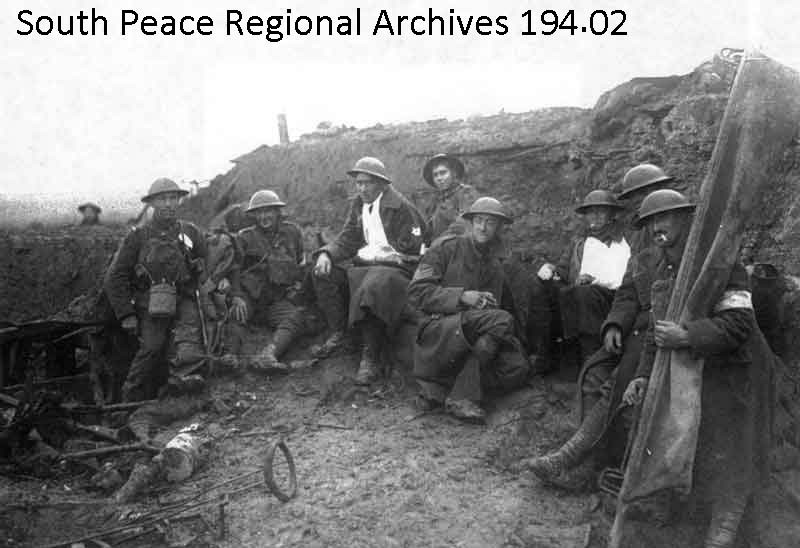April 9 – 12, 1917
Across the summit of the ridge
The Maple Leaf battalions pour
They’ve carried it in glorious war –
How great has been the privilege.
(excerpt from The Canadian Machine Gunner, a World War I trench newspaper)
This year, in 2017, Canada will be celebrating its 150th birthday. But for quite some time after confederation, our country was still hiding in the shadow of Great Britain. The Great War, despite its atrocities, was the event that allowed Canada to emerge as a nation and gain the respect, and even awe, of the rest of the world. As Brigadier General Ross so famously said when speaking of the Battle of Vimy Ridge, “It was Canada from the Atlantic to the Pacific on parade. I thought then… that in those few minutes, I witnessed the birth of a nation.”
In October of 1916, Canadian battalions began arriving in the Vimy sector in northern France, and by December, all four Canadian divisions (100,000 men) were gathered together in one place for the first time in the war. Months of reconnaissance, planning, and digging lay ahead of the men. Private George Wesley Bass, a South Peace man, spent those six months leading up to the battle working with the Canadian Engineers, laboring in the extensive maze of underground tunnels. These tunnels would be exploded at ‘zero hour,’ and men would pour out of them onto the battlefield. Subterranean subways were also built to transport supplies and wounded soldiers. When going over the top on April 13, 1917, Private Bass was wounded in his side and his arm.
The notorious Vimy Ridge is an escarpment approximately seven kilometers in length. It rises gradually on the western side, and drops more quickly on the eastern side. With an elevation of 145 meters above the Douai Plains, the ridge provides an unobstructed view for tens of kilometers in every direction – which explains why the British and French had tried (and failed) to capture it numerous times earlier in the war.
The attack on the ridge was originally planned for April 8, but because of poor weather it was postponed until April 9, 1917 (Easter Monday) at 5:30am. General Arthur Currie, in command of the 1st Canadian Division, had these words to say to the troops headed into battle: “… To those who fall I say: You will not die, but step into immortality. Your mothers will not lament your fate, but will be proud to have borne such sons. Your name will be revered forever and ever by your grateful country…”. General Currie was promoted to commander of the Canadian Corps shortly after the battle, a tribute to its great success.
By nightfall on April 10, the only objective not taken was ‘the Pimple.’ Many different roles must be played for a battle to be so decisively won. One such role was mopping up, the duty of the 49th Battalion, of which many men from the South Peace were a part. Mop-up parties were responsible for following assault parties in order to kill any remaining defenders. They also cared for wounded men on the battlefield and performed other more ‘lowly’ tasks. David Barr was a private in the 49th Battalion and was killed on the first day of the battle, April 9. Following the battle, his battalion received many telegrams and messages of thanks for their enormous and crucial contribution during the attack.
Of the 100,000 Canadians involved in the battle, 3,598 were killed and 7,004 were wounded by the time the last objective was reached on April 12. Some men, like Private Benjamin Gray of DeBolt, were wounded so severely that they were sent home for the duration of the war. (Private Gray lost his arm due to an injury sustained at Vimy Ridge). His Majesty King George V said to Field Marshall Douglas Haig, “Canada will be proud that the taking of Vimy Ridge has fallen to the lot of her troops.” And I do not doubt that the folks here in the South Peace region felt that pride every bit as keenly as the rest of the nation, even as they waited for their fathers, husbands, brothers, and sons to return.
It is said that when having learned of the victory at Vimy Ridge, a French soldier declared “C’est impossible!” but upon learning it was the Canadians who had won, he exclaimed “Ah! Les Canadiens! C’est possible!”
That is our legacy.
researched & written by Kaylee Dyck
Sources:
for biographies of George Wesley Bass, David Barr, and Benjamin Gray, visit South Peace Soldiers Memorial
The Canadian Machine Gunner (see pages 18 & 27)
Preparing for the Attack on Vimy – Veterans Affairs Canada
